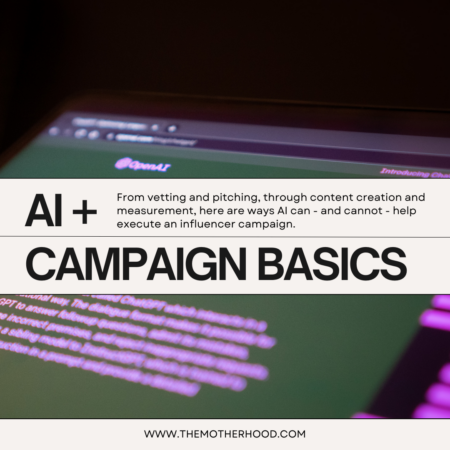Automation. Bard. ChatGPT. Technology seems to be moving at an accelerated pace these days. And while the advancements hold many opportunities, there is still skepticism and even some fear around the subject.
When it comes to influencer marketing, automation and technology are nothing new. With the industry set to grow to approximately $21.1 billion in 2023, it’s no wonder that many are looking for tools to help expedite their processes. There is an abundance of platforms out there that are a good supplement to campaigns, but when working with influencers, a hand-crafted approach is the best way to build a triad of trust among brands, influencers and their communities alike.
We need to get back to basics with influencer marketing.

Consultants McKinsey & Co. released a report on how generative AI such as ChatGPT will “change the world’s workforce.” The report found that with generative AI, productivity increases could range between 0.1% and 0.6% over the next 20 years, and there are predictions around a significant reorganization of labor.
As the demand for content, content and more content grows for marketers, these types of tools will in fact make an impact. For example, using prompts to help start blog posts, creative briefs or brainstorms. But they are not the be all, end all. After all, the reason brands look to creators to work with is to tell their own unique stories, woven into the brand messaging in an authentic, engaging way. Something a machine simply cannot replicate.
Vetting & Pitching
A journalist on LinkedIn shared that she received a pitch that expressed admiration for a book she not only didn’t write but also didn’t even exist. Turns out, the PR agency who pitched her used ChatGPT to craft the email, and it had falsely identified this. ChatGPT can be a great way to start your research on pitching journalists and influencers alike.
But it’s just a first step.
Really researching and vetting an influencer requires a mix of tools – particularly manual research – to identify if they are a good fit to consider for a brand campaign. There are so many nuances technology just can’t find (at least not yet). And while it could also help in crafting emails, using a targeted, tailored approach for outreach continues to be the best way to get the attention of both journalists and influencers.
For brands that are highly regulated (think healthcare and financial institutions), a tailored approach is even more essential to ensure you are complying with things such as legal, regulatory, FDA and FTC guidelines and much more. Often, a more thorough vetting process should be put in place to make sure the type of influencer you choose is a good fit for the campaign and will comply with brand standards.
Content Creation
AI-assisted content creation has been starting to pop up. Newer startups like YouAI are trying to make it more personal. But ask anyone who follows an influencer, and they will tell you more about the creator themselves (they have two kids, love kitchen dance parties, etc.), and less about how much content they produce on a weekly basis.
Our prediction? Creators with staying power will continue to produce high-quality content that is not AI-generated. Perhaps they’ll use these tools to make them more productive, such as incorporating prompts to help them brainstorm new ideas, outline future content or help edit videos – but if more AI-generated content starts to gather in social news feeds, chances are the authentic, real content will continue to rise to the top
Measuring Success
Reporting on social media campaigns can be very time-consuming, but when it comes to metrics that matter, technology can only go so far. A lot of third-party apps fall short for certain reporting. This is because of things like API changes and restrictions. We like to use a mix of both technology and a human-to-human approach for reporting. We use apps to help power campaigns but then speak directly with each influencer after the campaign ends to receive their metrics and discuss how their content performed to ensure we have the full picture, such as private DMs they received.
For example, during a recent campaign that focused on maternal health and what warning signs to look for, one influencer we worked with (a physician and a mom) let us know she received a few DMs thanking her for sharing this information and from people who had a really tough postpartum period where they really had to advocate for themselves. There are many personal experiences that happen behind the scenes that platforms just can’t access, and this showcases the power of quality content and audience feedback far beyond what the algorithms can tell us. We love to gather all of the data and extract what matters most to each client and their campaign KPIs. While it may be time-consuming, it’s an effective way to report.
It’s a smart idea to embrace artificial intelligence since that’s where we’re heading. But in today’s over-saturated marketing mix, creativity and personalization still hold true, as is getting back to basics.


Take a Comment. Leave a Comment.
Read More ...
Upcoming Influencer Marketing Trends: Takeaways from the CreatorIQ Connect Conference
Influencer Marketing Resources: October 2024
Influencer Marketing Resources: September 2024